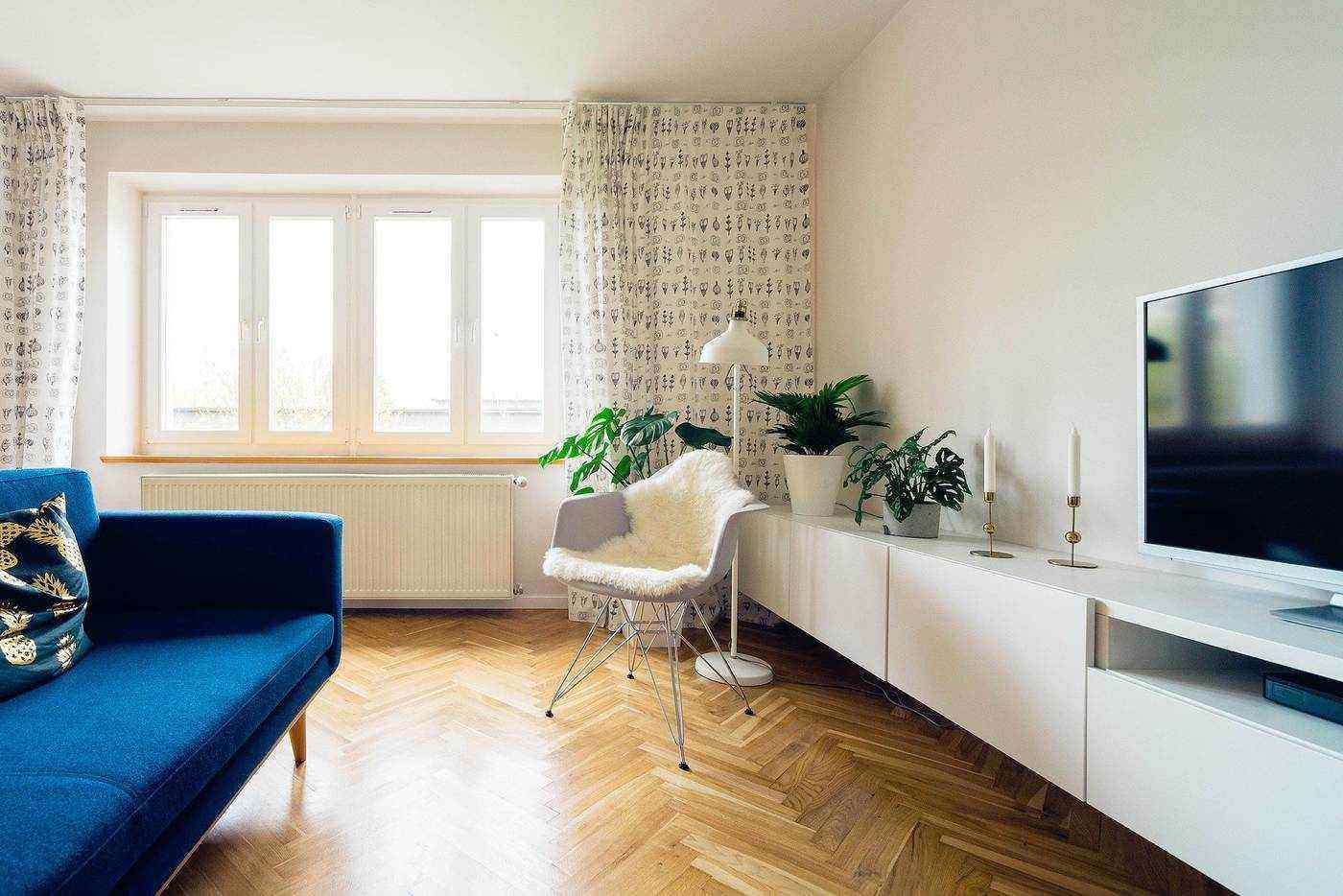It’s a great idea to soundproof your TV room if you like to watch movies or play video games at a high volume. This will help you create a peaceful environment and prevent your neighbors from being annoyed on a daily basis.
In this article, I’ll explain the most affordable ways in which you can soundproof your TV room and reduce unwanted noise. Take a look at all the steps below and decide which ones will work best for you!
How to Soundproof a TV Room
1. Soundproof the Door
The first thing you need to do is soundproof the door, because it’s one of the biggest culprits when it comes to letting in unwanted noise. Soundproofing your door can be quite easy, since it won’t require much time and effort to seal all the gaps and cracks.
However, if the gaps and cracks are small, it might be hard to locate them, but there’s a simple trick you can try. Turn the light off in the room and ask someone to hold a light while standing on the other side of the closed door. You should then notice some light passing through the gaps and cracks.
Once you’ve found all the gaps, you can easily seal the smallest ones by using the Red Devil small gap filler. If the gaps on your door are bigger than one inch, though, then I recommend using this insulating sealant. It’s an airtight sealant that’s great for sound-deadening. It’s also paintable, so you can paint it the exact same color as your door.
If you don’t have any money to invest in new materials, simply search your closet for a thick blanket to cover the door. Even though this solution isn’t extremely effective, it’ll help stop some noise from passing through the door.
2. Soundproof the Walls
Aside from the door, I recommend that you soundproof the walls, because most houses are built with extremely thin walls these days.
There are many things you can do to your existing walls to help sound-dampen them. Most of these solutions won’t require much time and effort, or any professional help.
You can start by adding more mass to each existing wall. All you’ll need for this is a layer of drywall and a green glue sealant. Adding drywall will make an old old, thin wall a bit thicker, and in that way, stop unwanted noise from getting inside.
Before buying drywall, make sure that you measure your walls, so you’ll be able to get some drywall that perfectly fits their dimensions. If you notice any gaps or cracks in the drywall, fill them up by using green glue. After you’ve finished filling up the holes, you’ll be ready to add the drywall to each existing wall.
If your budget is tight, another thing you can do is cover your walls with thick blankets. This may not be the best solution, but it’s worth mentioning for those people who don’t have a lot of money to spend.
3. Soundproof the Windows
As with doors, you’ll often find a lot of gaps in your windows as well. You should also keep in mind that windows are usually made from thin materials, so you’ll need a thick, dense material to block sound from traveling through a window.
If you’re serious about soundproofing your windows, the best idea would be to completely block each window. However, most people won’t like this idea, because they need their windows for light or aesthetics.
This is why I highly recommend installing some noise-blocking curtains (available online). These curtains are very effective at reducing the amount of sound and echoes in a room. Since curtains look nice anyway, adding a set of these may also make your room look extremely attractive.
If you don’t mind spending a fair amount of money, you may want to replace each window completely. This will probably cost you about $800 or more, including the fees you might pay for labor. If you decide to replace a window, make sure the professional who installs the new one takes the time to completely seal all of the edges.
4. Soundproof the Ceiling
The last thing you can do is soundproof your ceiling. This isn’t absolutely necessary, but if your goal is to soundproof your TV room as much as possible, it’s best to consider doing it.
First, you’ll need to seal all the cracks in the ceiling to make sure sound waves don’t pass through. Once all the cracks are securely sealed, I recommend adding some acoustic foam panels, which are quite easy to install and come in many different types and colors.
If you don’t like the bulkiness of the acoustic panels, then you can add more mass by attaching Mass Loaded Vinyl mats. If you place these mats on the ceiling, you’ll have good protection from both high and low-frequency sounds.
Conclusion
As you can see, there are tons of ways in which you can get rid of unwanted noise within your TV room. Most of these steps are very affordable, so if you’re on a tight budget, you won’t have to worry about emptying your wallet.
If you’re interested in learning more about soundproofing in the home, you may want to check out my guide to soundproofing a gaming room. If you have any questions, please let us know by leaving a comment down below.
image: Pixabay





